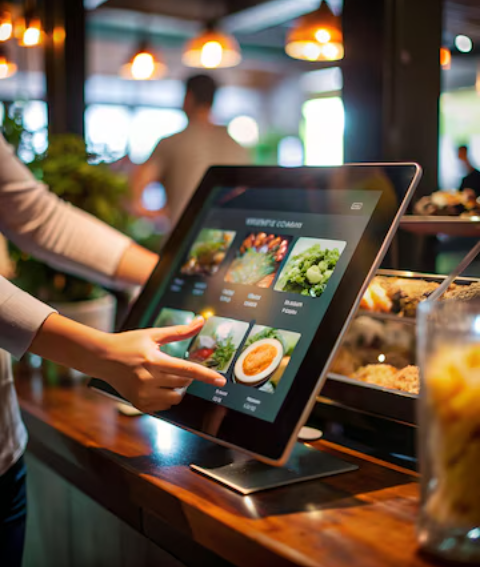The secret to keep running a successful restaurant business is efficiency. You want your employees to be content, effective, and laser-focused on what really counts: providing exceptional customer service. Self-service kiosks revolutionise the way you operate and enhance the customer experience.
But whether you realise it or not, your staff members may frequently feel frustrated. What if there was a method to improve morale among your staff, free up time for them, and simplify everyday tasks? Yes, you certainly can with self-service kiosks.
There are mixed feelings about the increasing automation in the restaurant business, ranging from optimism to trepidation. Contrary to popular belief, machines will never replace human labour or alienate consumers. When used intelligently, food ordering kiosks empower patrons and employees alike, improving the eating experience in general. These kiosks are catalysts and efficiency tools for a more engaged workforce and satisfied clients.
The Rise of Food Ordering Kiosks: A Brief Overview:
These digital touchpoints, which allow customers to place orders directly with a level of customisation and convenience that traditional ordering methods cannot match, have become increasingly popular in restaurants, from fast-food chains to fine dining establishments. For restaurants, kiosks offer a way to streamline operations, reduce human error, and boost sales through opportunities for upselling. However, beyond these apparent benefits lies a more profound impact—creating a win-win situation for both customers and employees. Let’s examine how these systems change restaurant dynamics, ensuring a favourable result for all parties involved.
A) Using Automation to Empower Employees
- Reducing Stress During Peak Hours of the Day: During peak hours, there is a lot of pressure to service fast, deal with large lines, and place complex orders. It can be stressful. Food ordering kiosks make it easier by handling the ordering process for you. Thanks to this automation, employees can concentrate on more labour-intensive duties like meal preparation, customer service, and upkeep of cleanliness. Employees can interact more deeply with consumers when they are not assigned as many repetitive jobs, which lowers stress and boosts work satisfaction.
- Making Skill Development Meaningful: With kiosks handling front-end operations, employees have more time to develop essential skills that advance their careers. They can concentrate on honing managerial skills, culinary expertise, or food presentation, leading to increased job satisfaction and reduced turnover. This focus on skill development not only benefits the staff but also enhances the customer experience.
- Increasing Collaboration and Workflow: The use of kiosks makes ordering more accessible and relieves pressure on the kitchen and service staff. When there are fewer manual orders to handle, the kitchen crew may start preparing meals more rapidly, cutting down on wait times and raising the standard of service. This efficiency fosters improved teamwork and collaboration among employees, enhancing the work environment.
B) Improving the Customer Experience
1. Customisation and Control: When customers order food from kiosks, they have more control over their eating experience. Thanks to user-friendly interfaces, customers may discover new alternatives, personalise their orders, and peruse the menu at their own leisure. Those with dietary restrictions or individual tastes will find this personalised experience especially appealing since it lowers the possibility of errors and increases consumer satisfaction.
2.Quicker Assistance and Shorter Wait Times: In today’s fast-paced world, customers value convenience. Kiosks drastically cut down on wait times by streamlining the ordering and payment procedures. Several clients can place orders concurrently, removing wait times and guaranteeing fast service. This efficiency is especially important in fast-casual and quick-service restaurants, where speed is essential to client satisfaction.
3. Improved Usability: Additionally, kiosks can increase inclusivity in dining settings. With features like large font, changeable screen heights, and multilingual support, many contemporary kiosks make it simpler for clients with varying needs to place orders independently. Because of its inclusion, the restaurant draws in more business and enjoys a better reputation.
Balancing Technology and Human Interaction
Achieving a balance between technology and human connection is crucial. Even though kiosks have many advantages, a fully automated eating experience can seem impersonal. Restaurants should keep spending money on employee training so that their staff members are equipped to deliver great customer service and help patrons who might need help using the kiosks.
Overcoming Obstacles and Optimising Gains
Implementing food ordering kiosks calls for meticulous preparation and execution. Obstacles include the initial investment expense, employee training, and any technical problems that must be addressed. However, when appropriately used, kiosks may significantly improve customer satisfaction and staff happiness, making running a restaurant more profitable and efficient.
Restaurants may leverage technology by embracing it and strongly emphasising human interaction; they can harness the power of kiosks to create a harmonious dining experience that benefits both staff and customers.






